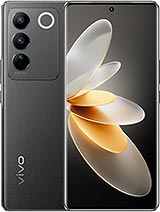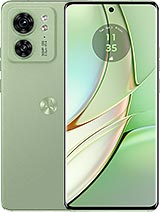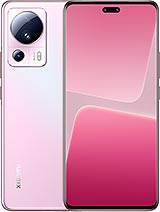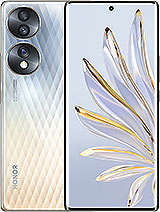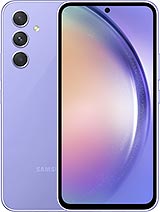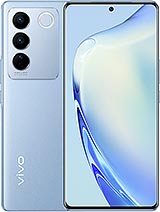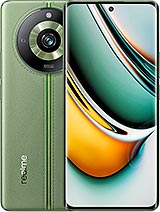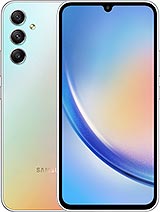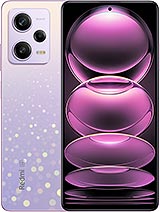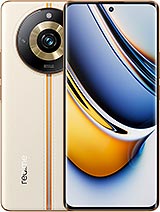Honor 90 review

Android 13 with Magic OS 7.1 on top
The Honor 90 runs an in-house MagicOS 7.1 on top of an Android 13 core. And it's a fully functional Android 13, including full support for the Google apps suite, unlike Huawei's software builds, which are limited in one way or another.

You may note that Honor has renamed its Android overlay from UI to OS with this v7 in an attempt to break away from its Huawei EMUI roots. A lot has been shared over the years between Magic OS (or UI), and EMUI and traces of that common past remain, so if you've used a moderately recent Huawei phone, you'd be right at home, but differences do exist.
Going from UI 6 to OS 7, we see subtle changes here or there, but the overall look and feel of the Magic overlay remain the same. Iconography is largely unchanged, the task switcher and notification/quick settings are the same (and that's one area where the latest EMUI and its Control center differs), and the Settings menu doesn't look one bit different either.






Homescreen • Task Switcher • Notifications • Quick settings • Settings menu
Also available here is previously introduced functionality like large folders and the card bar that sits under app icons to indicate that the app supports cards (another name for the in-house widgets).
Speaking of widgets, some neat EMUI features are nowhere to be found on the Honor 90' Magic OS, like the widget stacking or the combined widgets.

A Yoyo suggestions card/widget lets you have the onboard assistant pitch apps that it thinks you might be inclined to use based on previous experience.





Large folders • Large folders • Large folders • Home screen settings • Cards
Naturally, a host of customization options are there for you to explore as well. You've got a wide selection of themes, Always-on display styles, the lot. You can also enable an app drawer if you like.
A Themes app with a variety of themes, fonts, wallpapers, and icon packs is also available.
There's a split-screen multi-window and pop-up window mode for some in-house and third-party apps. You can only open one pop-up app at a time and subsequent ones in a separate task switcher.
Honor provides a bunch of proprietary apps, too. There is Gallery, Honor Health, Notes, Files, System Manager, and Weather.






Gallery • Health • Notes • System Manager • Files • Weather
There are quite a few pre-installed apps on the Honor 90, including some games. Things that might be considered as "bloat" by some users. Our unit included Netflix, Facebook, Booking.com, TikTok, TrainPal, Trip.com, WPS office, Lords Mobile and Game of Sultans. All of these are quickly uninstallable, of course.
Overall, we are happy with the Magic UI, and most people who liked Huawei's EMUI or don't mind custom overlays will appreciate its rich customization options.
Performance and benchmarks
The Honor 90 is equipped with a Qualcomm Snapdragon 7 Gen 1 chipset. It is a modern part introduced in 2022, based on an efficient Samsung 4nm manufacturing process. The Honor 90 uses a slightly overclocked version of the chipset called the "Accelerated Edition". Its prime Cortex-A710 CPU core is clocked at up to 2.5 GHz instead of the standard 2.4 GHz. The rest of the CPU configuration consists of three more Cortex-A710 cores (Kryo Gold), clocked at up to 3.36 GHz and finally, an additional four Cortex-A510 cores, working at up to 1.8 GHz.

The Snapdragon 7 Gen 1 has an Adreno 644 GPU. There is an integrated X62 5G and LTE combo modem for connectivity. Also, a FastConnect 6700 modem provides Bluetooth 5.2 connectivity and dual-band Wi-Fi 6 (ax). The Honor 90 supports GPS, GALILEO, GLONASS, BDS and QZSS for positioning. By the way, there is also NFC on board.
The Honor 90 comes in a plethora of memory and storage configurations: 256GB 8GB RAM, 256GB 12GB RAM, 256GB 16GB RAM, 512GB 12GB RAM, 512GB 16GB RAM. Not all of these will be available in every retail market, though. Our review unit is the penultimate 512GB storage and 12GB RAM variant. We remind you there is no expandable storage on the Honor 90, so make sure to get enough storage for yourself from the get-go.
Let's kick things off with GeekBench and some CPU runs. While not a chart-topper among its price-peers, the Honor 90 and its Snapdragon 7 Gen 1 definitely hold their own well. We can see that the slight bump in frequency on the primary core shines through compared to the regular Snapdragon 7 Gen 1 inside the Xiaomi 13 Lite, especially in single-core performance testing.
The Snapdragon 7 Gen 1 is somewhat close in performance to the Snapdragon 778G and 778G+ but does have those chipsets beat. The same goes for the Exynos 1380 inside the Galaxy A54. At the opposite end of the scale, we find the Dimensity 8020 and 8050, which are both comparable, though slightly better at CPU tasks compared to the Snapdragon 7 Gen 1. The Dimensity 8200 and the Snapdragon 7+ Gen 2 inside the Xiaomi Poco F5 do have a noticeable advantage in the CPU department, though.
AnTuTu is a much more compound benchmark with GPU and memory tests in its roster. It is pretty favorable towards the Honor 90 and the accelerated edition of its Snapdragon 7 Gen 1 chipset, placing it considerably higher on the chart than the Xiaomi 13 Lite with the Snapdragon 7 Gen 1 vanilla version.
The Honor 90 also has the Honor 70 and its Snapdragon 778G+ beat, though not by a lot, and the same is generally true for the Realme 11 Pro and Pro+ pair, rocking the Dimensity 7050 chipset. The Galaxy A54 and its Exynos 1380 are lagging quite a bit behind. On the other hand, the vivo V27 with its Dimensity 7200 has a notable lead in AnTuTu score over the Honor 90. The Dimensity 8050 and 8020 inside the Infinix GT 10 Pro and Motorola Edge 40, respectively, widen the gap even more, and so does the older Snapdragon 888 ex-flagship inside the Samsung Galaxy S21 FE. Topping the chart, with notably more performance to throw around, we once again find the Snapdragon 7+ Gen 2 inside the Poco F5, followed by the vivo V27 Pro and Google Pixel 7a.
The Adreno 644 GPU inside the Honor 90 is not particularly powerful. It does still hold its own well amongst the competition. According to GFXBench and its test, you can expect performance about on par with the Snapdragon 778G+ and its Adreno 642L and just slightly better than the Exynos 1380 and Mali-G68 MP5 combo.
At least the Adreno 664 leaves the popular Mali-G68 MC4 GPU setup in the dust. The Mali-G77 MC9 one inside the Dimensity 8020 and 8050 offers a notable uptick in performance, though. The same goes for the Adreno 660 inside the Galaxy S21 FE, as well as the vivo V23 Pro and Pixel 7a and their respective GPU solutions. Topping the chart in GPU performance, just like CPU, we find the Xiaomi Poco F5 with its Snapdragon 7+ Gen 2 chipset and Adreno 725 GPU again.
3Dmark paints a very similar overall picture.
Overall, the Honor 90 performs well enough. It runs its OS smoothly with no noticeable hiccups or stutters. There is enough power to chew through everyday tasks, and casual gaming is definitely on the table. Even gaming at over 60fps in high refresh rate mode is perfectly feasible with the right choice of lighter titles. The Honor 90 is no powerhouse but is not strapped for power.
The Honor 90 does not handle prolonged stress particularly well. It thermal-throttles aggressively and loses quite a bit of its performance very quickly when pushed to its limit.
The throttling is not particularly gradual either, which is not great. Such sudden dips can result in stutters in game. At least on a more positive note, the phone's surface never gets more than lukewarm, even after a full hour of torture testing.
Reader comments
- Anonymous
- 17 Feb 2025
- a4}
samsung a54 better
- Anonymous
- 30 Dec 2024
- fxH
ya, I'm useing Edge 30 neo & its coming green line...
- Anonymous
- 08 Dec 2024
- txG
Neo has ltpo display, and motorola has long standing RnD, lytia 700 sensor is best


















